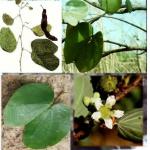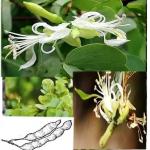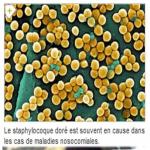Algodystrophy definition causes and risk factors
- By narso10
- On 2025-08-22
- 0 comments
Algodystrophy, also referred to as Complex Regional Pain Syndrome , is a chronic and debilitating condition characterized by persistent and often disproportionate pain following trauma, surgery, or even without a clear trigger. Because of its complex and not fully elucidated mechanisms, CRPS poses a major therapeutic challenge. In addition, as conventional treatments often show limited effectiveness, phytotherapy is increasingly gaining attention as a complementary approach.
Please to join us here
Definition and classification
Algodystrophy is defined as a painful and functional disorder that predominantly affects the extremities. It usually occurs after trauma, fractures, surgery, or immobilization. Two clinical forms are distinguished:
Type I (Reflex Sympathetic Dystrophy): no identifiable nerve injury.
Type II (Causalgia): associated with confirmed nerve damage.
Thus, CRPS encompasses a spectrum of syndromes where neuropathic pain and inflammatory processes play central roles.
Causes and risk factors
Although the precise pathophysiology remains unclear, several interacting factors are believed to contribute:
Dysregulation of the autonomic nervous system,
An exaggerated inflammatory response,
Psychological factors such as anxiety and depression.
Moreover, certain situations increase the risk of developing algodystrophy, including fractures, sprains, surgical procedures, and prolonged immobilization.
Clinical manifestations and evolution
Patients with CRPS typically experience:
Severe burning or stabbing pain,
Edema and vasomotor disturbances,
Joint stiffness progressing to ankylosis,
Muscle atrophy in advanced cases.
The disease often follows two stages:
The “warm phase”, with marked inflammation, redness, warmth, and acute pain.
The “cold phase”, with stiffness, pallor, hypothermia of the limb, and reduced mobility.
Because symptoms can vary widely, diagnosis is often delayed or misinterpreted.
Diagnosis
Diagnosis is mainly clinical, relying on characteristic pain patterns and physical signs. Additional tests may help exclude differential diagnoses such as arthritis, thrombosis, or infection. For instance, bone scintigraphy may reveal hyperfixation, while MRI can show inflammatory changes. However, no single test is definitive, making CRPS a diagnosis of exclusion.
Conventional management
Treatment strategies for CRPS are multidisciplinary and include:
Pharmacological therapy: analgesics, anti-inflammatory drugs, bisphosphonates, or neuropathic pain agents.
Physical therapy: gentle and progressive mobilization is essential to avoid ankylosis.
Adjunctive techniques: balneotherapy, cryotherapy, or transcutaneous electrical nerve stimulation (TENS).
Yet, many patients continue to experience significant pain, which highlights the need for complementary therapies such as phytotherapy.
Contributions of phytotherapy
Phytotherapy, or the use of medicinal plants, has been practiced for centuries to manage pain and inflammation. Although no plant cures CRPS directly, several show anti-inflammatory, analgesic, or anxiolytic properties that may help relieve symptoms and improve quality of life.
1. Turmeric (Curcuma longa)
Contains curcumin, a powerful anti-inflammatory and antioxidant compound.
Clinical studies (Gupta et al., 2013, Phytotherapy Research) confirm its benefits in chronic joint pain.
It may reduce inflammation and oxidative stress in CRPS patients.
2. Devil’s Claw
Traditionally used for rheumatism, back pain, and arthritis.
A systematic review (Brien et al., 2006, BMJ Clinical Evidence) found evidence of pain reduction in musculoskeletal disorders.
It may help decrease stiffness and functional limitation in CRPS.
3. Ginger (Zingiber officinale)
Its gingerols exhibit strong anti-inflammatory and analgesic activity.
Studies (Grzanna et al., 2005, Journal of Medicinal Food) highlight its role in reducing chronic pain and improving mobility.
4. Valerian (Valeriana officinalis)
Known for its sedative and anxiolytic properties.
Useful in addressing the psychological dimension of CRPS, such as anxiety, insomnia, and stress-related exacerbation of pain.
5. Arnica (Arnica montana)
Mainly applied topically as gels or ointments to relieve post-traumatic inflammation and localized pain.
Widely used in Europe, though scientific evidence is mixed.
6. Boswellia serrata
Rich in boswellic acids, with anti-inflammatory activity comparable to nonsteroidal anti-inflammatory drugs .
Clinical trials (Kimmatkar et al., 2003, Phytomedicine) demonstrate its effectiveness in chronic joint pain, suggesting potential benefits for CRPS.
Complementary approaches
In addition to herbal remedies, essential oils such as wintergreen (Gaultheria procumbens) or lavender (Lavandula angustifolia) are sometimes used in massage for their analgesic and relaxing properties. Likewise, mind-body therapies (meditation, relaxation, hypnosis) can enhance pain coping strategies.
Please to join us here
Natural treatement Algodystrophy
Limitations and safety considerations
Although promising, phytotherapy is not without risks. Some herbs can interact with prescribed medications, while others may cause side effects if misused. Therefore, CRPS patients should always consult healthcare professionals before integrating herbal remedies into their care. Importantly, phytotherapy should remain a complement rather than a replacement for conventional therapy.
Conclusion natural treatement algodystrophy
In summary, algodystrophy is a complex, painful, and disabling syndrome that requires early recognition and multidisciplinary management. While conventional treatment focuses on pain relief and physical rehabilitation, phytotherapy provides additional avenues for symptom control. Plants such as turmeric, devil’s claw, ginger, valerian, arnica, and Boswellia show encouraging anti-inflammatory, analgesic, and anxiolytic effects. However, more targeted clinical trials are needed to confirm their role in CRPS management. Ultimately, combining medical treatment, rehabilitation, psychological support, and safe herbal remedies offers the best chance to improve patients’ quality of life.
Add a comment








